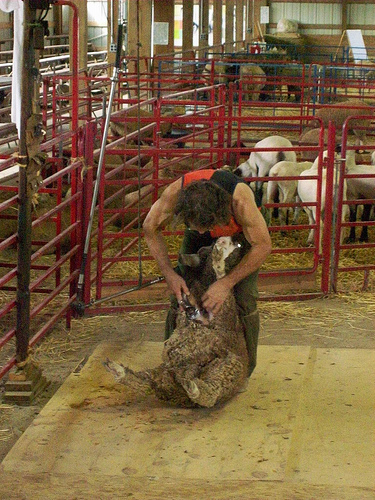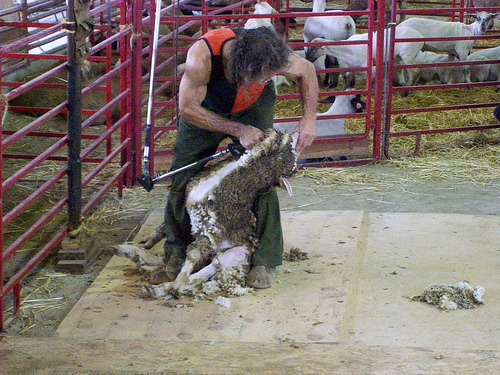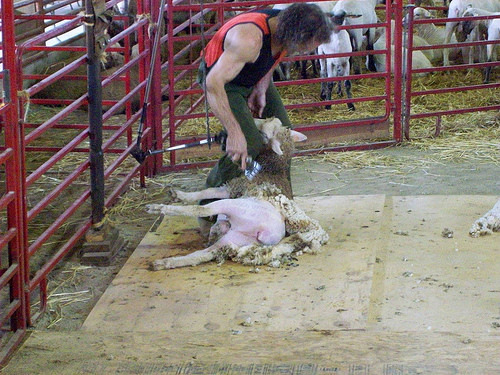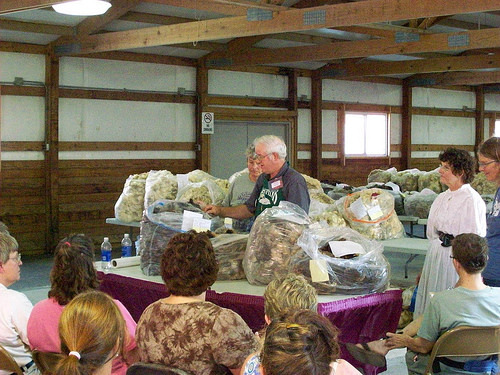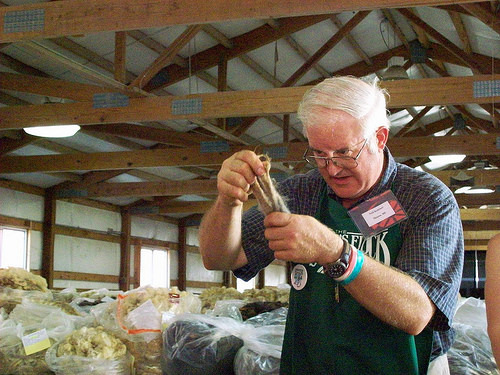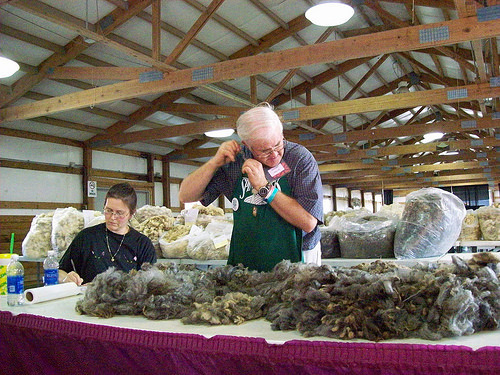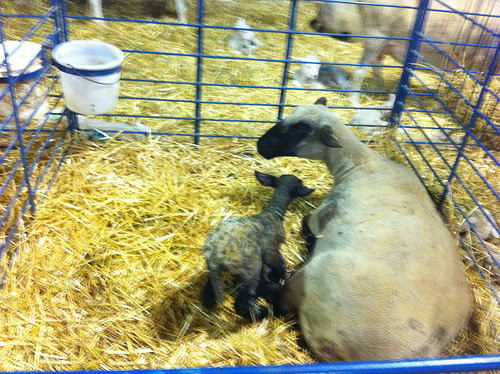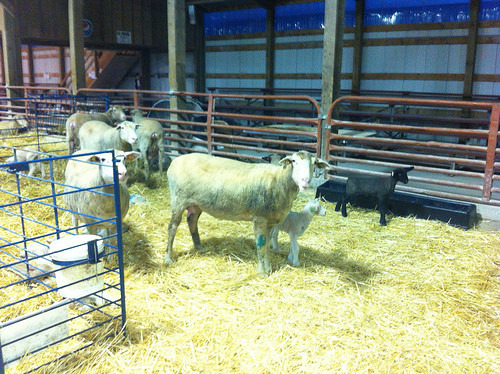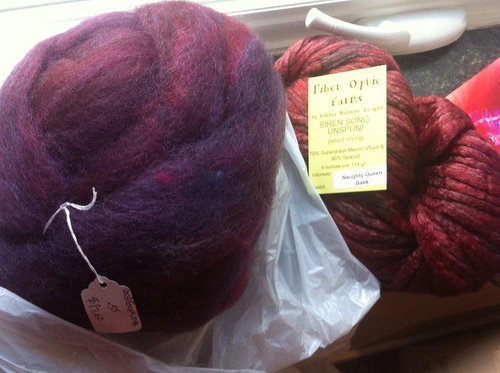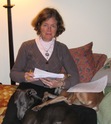Wisconsin Sheep and Wool, Part 2 by blondviolinist
Being at a fiber festival like Wisconsin Sheep & Wool can be tiring. There’s a lot of standing around on hard concrete floors, and walking from building to barn to the next barn. So it was a relief to be able to sit down and watch the sheep shearing demonstration.
The man giving the demonstration was full of information about everything from the importance of good shears to wearing the right kind of footwear to how to keep the sheep as calm & comfortable as possible during the shearing process.
He got the first sheep out of the pen ready to be shorn, and immediately said, “Oh! I shouldn’t have picked this one! It’s slower, and less impressive for demonstrations.”� The sheep he’d chosen had fleece all the way down its legs. Some breeds of sheep don’t grow wool on their legs (or heads, either), and they are easier for the shearers to work with.
(It’s very hard to be dignified if you are a sheep being shorn.)
“Does this position make my neck look fat?”�
The second sheep he pulled out of the pen was a different breed, and easier to shear. If you look closely, you can see that the wool is coming off in one blanket, almost, instead of lots of little fluffy pieces. That’s good, especially for handspinning, because it means the shearer knows his business, and the wool will be of even lengths that will be easy to work with. (The wool from a single sheep is called a “fleece,”� until you process it & mix it with wool from other sheep.)
By this time, the fleece judging had started in another part of the fairgrounds. This was the part my friend Carol was especially looking forward to. You could practically see her drool as she sat on the very front row to listen to everything the fleece judge said. After judging, the fleeces were going to be auctioned off, and Carol was plotting which ones she wanted to take home. (I had almost no fleece lust. I know what it takes to clean one of those suckers, and I’d just as soon let someone else do the dirty work. Literally.)
I’d seen a fleece judging once before, but this judge was fascinating. Different breeds of sheep produce wool with different qualities, so there were a number of different categories in which shepherds could enter their fleeces. As the judge looked over each fleece, he would talk about its strengths and weaknesses, and whether or not it ran true to breed. Often he’d pick up a lock of the fleece and look it over carefully. Most wool, if you look closely, looks like a tiny crimping iron was used on it, and he’d look to see if the crimp was uniform over the whole fleece.
If a sheep has been sick or stressed during the past year, there will be a weak spot in the lock, and the fibers may break as you try to spin them. To test the strength of each lock, he would hold it up by his ear and snap it tight, listening to the sound. It looks kind of funny, but it’s the best way to see if the lock is strong.
A lot of the fleeces looked like beautiful clouds, and I just wanted to go up to the table and stick my arms down in all that lovely wool!
After the judging came the auction. Carol made out like a bandit, coming home with five fleeces! (I never did get to see the spinning wheel she bought. She’d already buried it in sheep fleeces by the time I got to the car.)
By the time Carol picked up her fleeces, the festival was closed for the day and we needed to leave. We made a detour by the lambing barn, though.
Lambs are usually born in the spring, and September is definitely fall in the northern hemisphere. But the nice people at the University of Wisconsin breed specifically to lamb during the Sheep & Wool festival, so people can see new lambs!
“What are you looking at? Don’t you know it’s time to go home and leave us in peace with our babies?”�
I generously offered to drive most of the way home, since it was too dark to knit while someone else drove.
And yes, I did pick up some goodies in the sale barn before we left the festival. Apparently I was having a purple-y kind of day. Sometime soon I will have newly-spun sock yarn!
Robin McKinley's Blog
- Robin McKinley's profile
- 7243 followers


